Punta Arenas, Chile 12-8-06
Meeting the Magellanic penguins at Seno Otway and Isla Magdalena near Punta Arenas , Chile
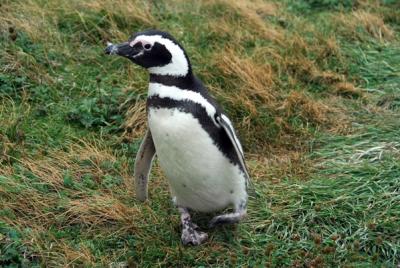
After watching the movies "Happy Feet" and "March of the Penguins" (highly recommended) I was looking forward to meeting my first penguin in the wild. Encountering the flightless bird that looks like it's wearing a tuxedo, and waddles foolishly when it walks was a lot of fun and a great learning experience. Punta Arenas has two penguin colonies in close proximity Seno Otway and Isla Magdalena.
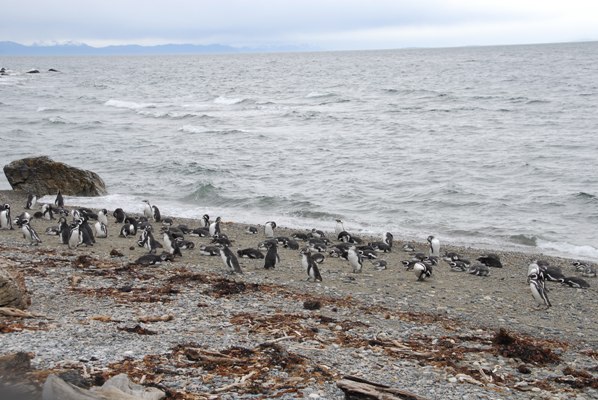
Come and visit the Pinguineras with me.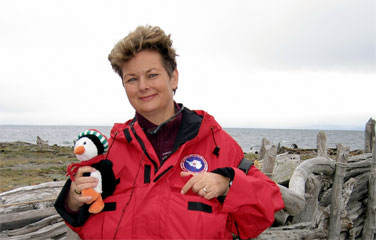
SENO OTWAY Pinguinera After a 1 hour drive from Punta Arenas one reaches Seno Otway. Between September and April about 6,000 specimens of the Magallanes specie penguins (Spheniscus magellanicus) uses this place to nest.
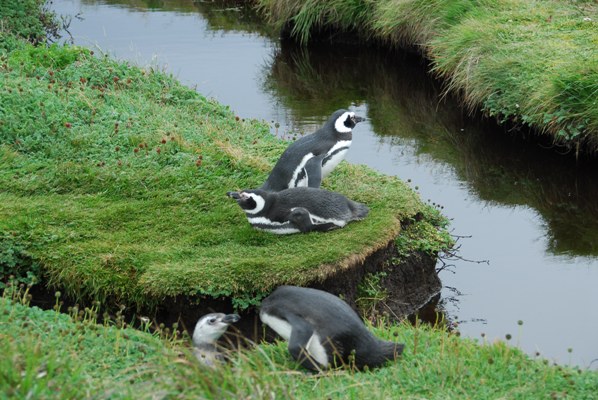
ISLA MAGDALENA- A PENGUINS´ WORLD
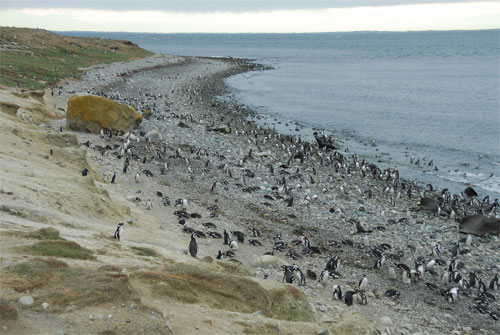
This island, that has a lighthouse in its northeast point, is together with Marta small island, a natural reserve of penguins, cormorants, seals and other birds. Both islands make up conservation area "The Penguins", 25 nautical miles north of Punta Arenas. The estimated penguins population is about 60,000 couples of Magellan specie.
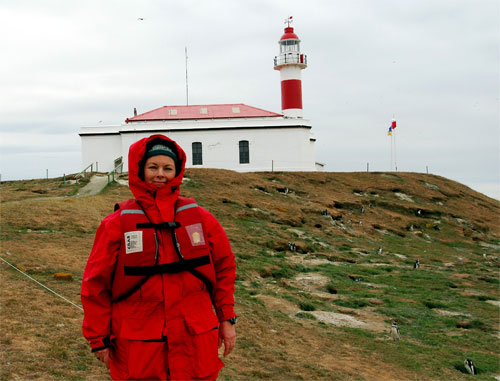
I estimate about 20 nests per 100 square meters.
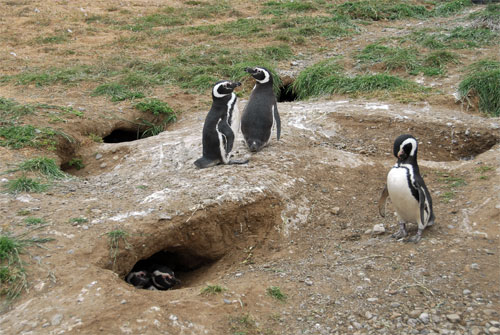
Nests are built under bushes, or in burrows.
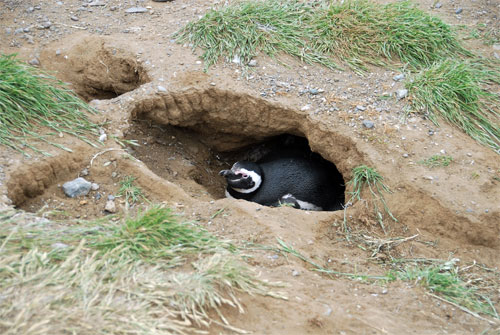
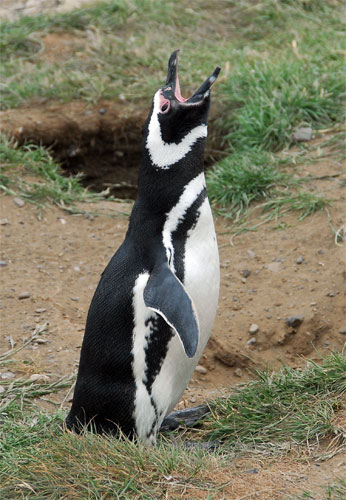
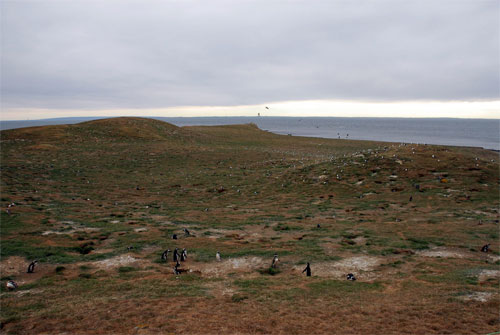
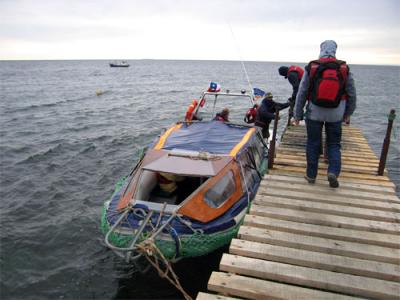
The boat ride to the island was about 2 hours long, stormy, big waves, very cold and wet. The boot was a small one, yes believe me small. It was a bit scary...
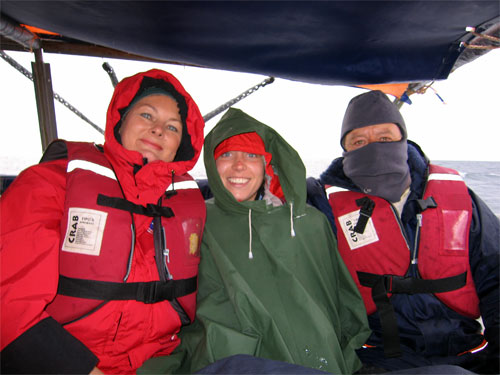
The captain of the small boat is on the right.
Magellan Penguin Quick Facts
This penguin was named after Ferdinand Magellan who first saw them in 1519 on his first voyage around the tip of South America. Large nesting colonies at the coasts of Argentina, Southern Chile, and the Falkland islands.
Population:700,000 pairsLocation:Coastlines of Chile & ArgentinaSize:27 inches tallWeight:9 poundsDiet: Krill, squid & fishNests:Life span:Burrows under rocks or bushesabout 25 years,
They have a wide black strip under their chin and another is in the shape of an upside down horseshoe on their stomachs. On their chests they have scattered black spots.
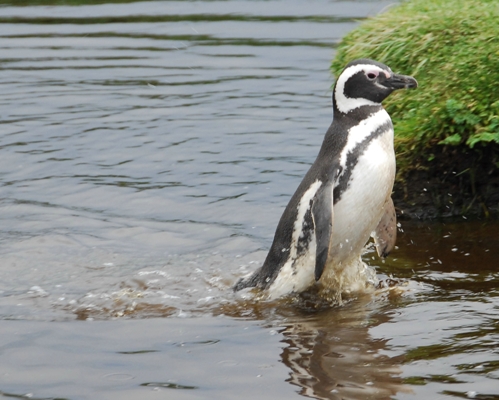
Magellanic penguins are excellent long distance swimmers, and often hunt in groups. Using their wings like paddles they can achieve speeds of over 15 miles per hour.
In contrast to many penguin species who feed chicks preferentially both Magellanic chicks are given equal care and often survive. Both the male and female share in the responsibility of caring for the chicks, taking shifts lasting ten to fifteen days while the other hunts for food. At 60 to 70 days old the chicks are ready to head out to sea.
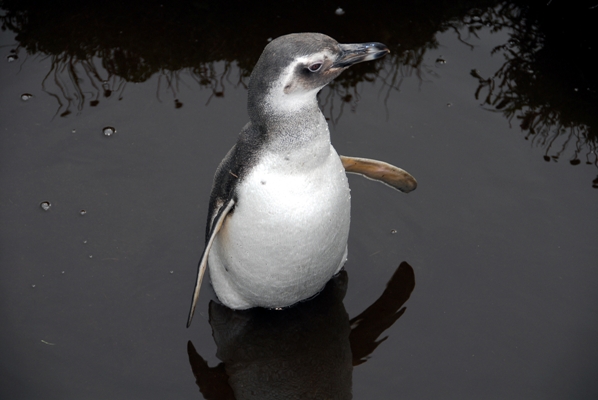
Photo of chick. Look at the diffrent color.
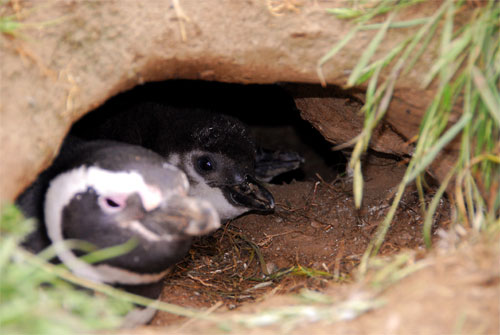
"Happy feet" connection:
Magellanic penguin populations are considered to be stable, however, they do face threats from oil spills, overfishing of their food supply, and fishing net entanglement.
Interesting facts:
They drink sea water, filtering out the salt with their salt excreting glands. Because of their excellent insulation, penguins are actually in greater danger of overheating than freezing. Young penguins molt into their "tuxedo" in their second year. The young ones return exceptionally to the colony, however they won't reproduce until 4 to 6 years after being born. Penguin fossils found in the present date back to the Eocene period, 50 million years ago.


Comments